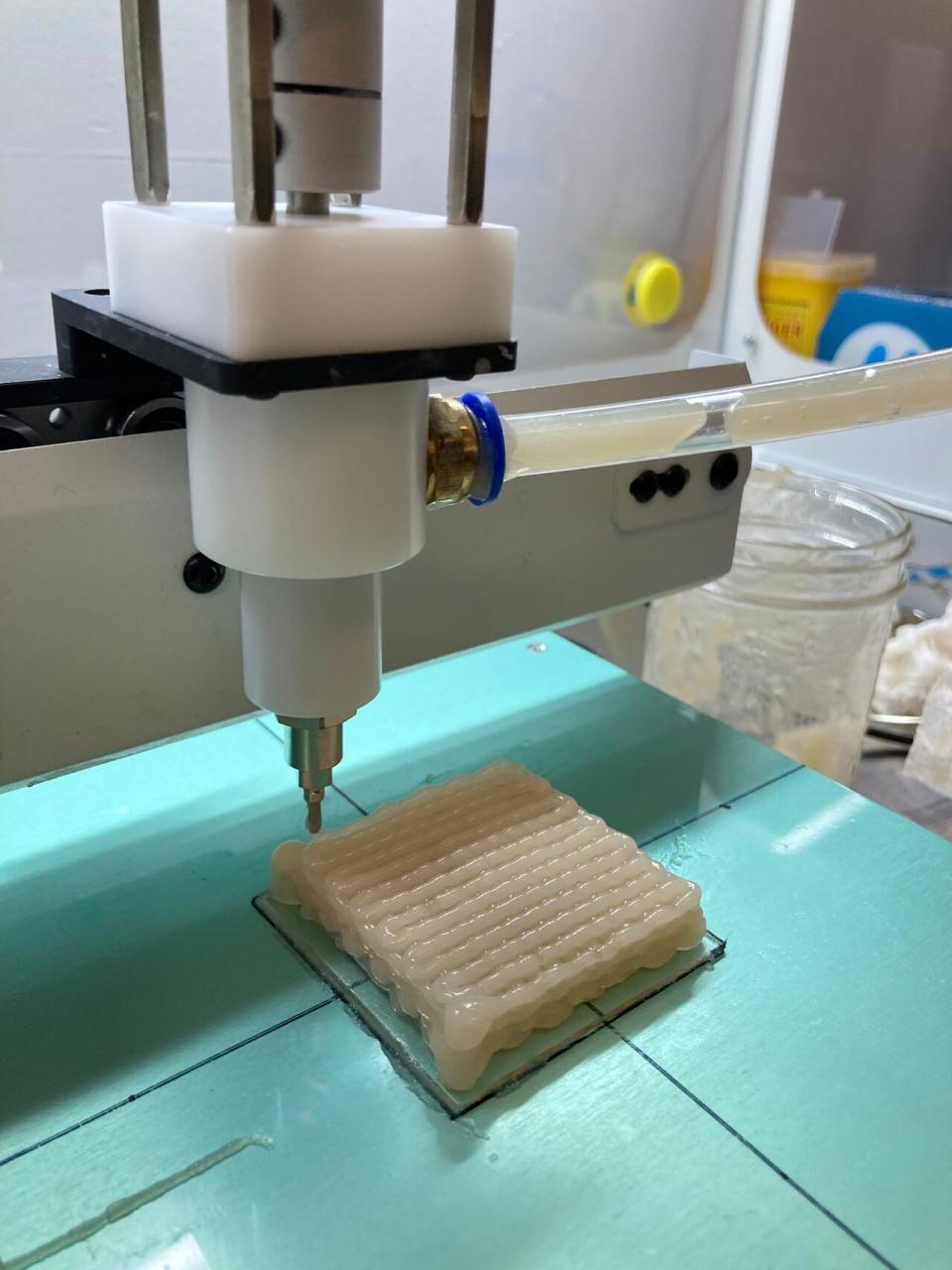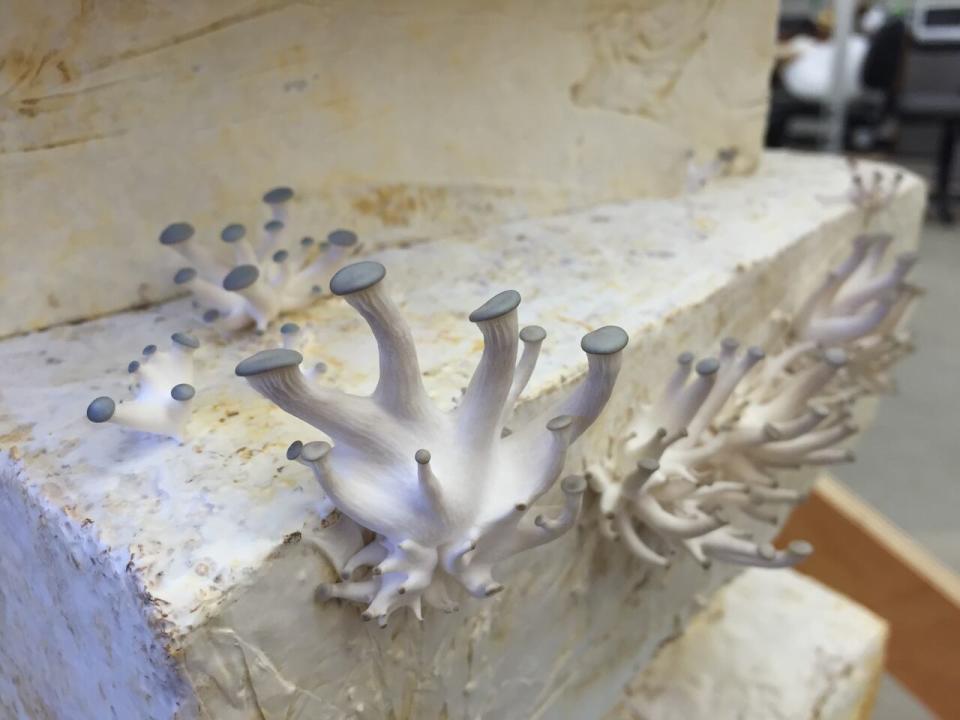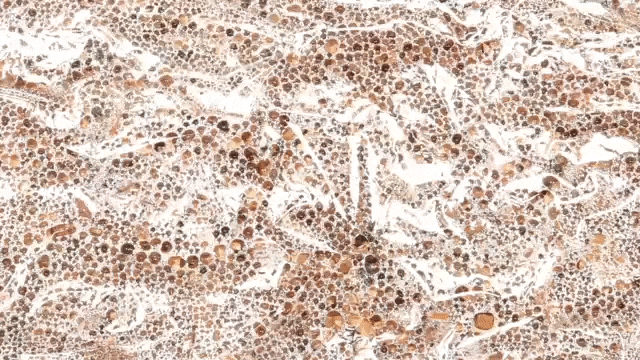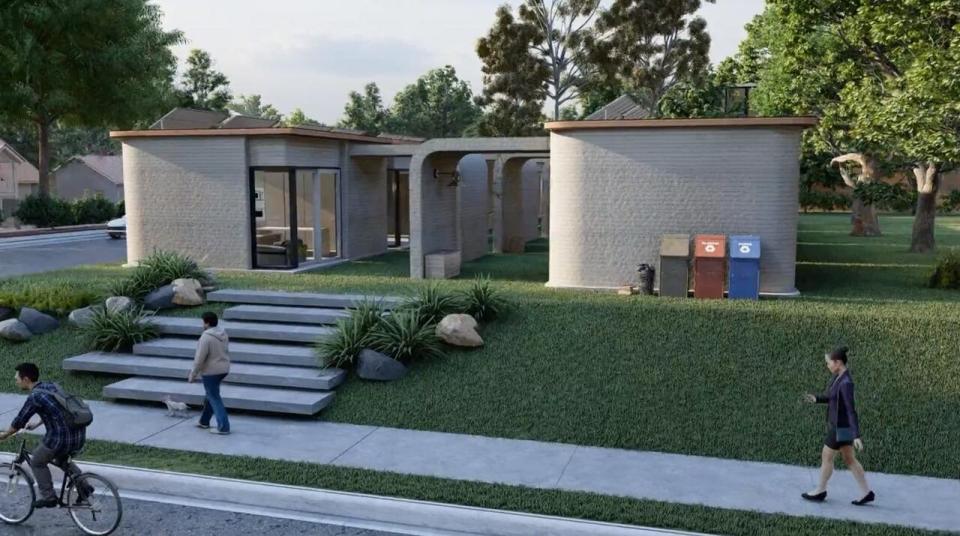A team of Vancouver academics is combining the fields of microbiology and architecture to create living building materials made from oyster mushrooms and other edible fungi.
They say their research into “engineered living materials” could help reduce the high energy and environmental impact of the construction industry, replace traditional insulation, and even regulate indoor temperatures as the climate warms.
It might even one day help filter out air pollutants like wildfire smoke, according to a postdoctoral researcher at the University of BC.
“This idea of engineered living material is a very new concept,” said Nicholas Lin, an engineer specializing in microbiology.
“These materials are assembled by combining raw materials with living cells and exhibit some specific properties of living systems,” explained Lin, whose research spans UBC’s schools of microbiology and architecture.
Teams in UBC’s Biogenic Architecture Laboratory are creating a variety of building materials filled with mycelium, a fuzzy-looking network of tiny, faint underground strands, or hyphae, that serve a similar function to the roots of plants.
But fungi, one of the oldest organisms on the planet, dating back more than a billion years, are neither plants nor animals.
The research team works mainly with edible species such as oyster, reishi and turkey tail mushrooms.
“Oysters are probably the most popular because we know they are edible, have no known toxicity, and grow very quickly,” Lin said.
‘Dynamic, adjustable’
One of his advisors is associate professor of architecture Joseph Dahmen.
Dahmen said his main inspiration over the years during his research on what he calls “mycelium biocomposites” was to reduce the energy and environmental impacts of construction materials.
“The lion’s share of the energy going into buildings is in the materials themselves,” he told CBC News. “Mycelium biocomposites offer a type of biodegradable material to replace them.”
To make engineered living materials such as bricks, gels that can form into any shape, insulation or drywall-like sheets, researchers mix fungal spores with a material high in cellulose, which is often recycled or a byproduct, such as sawdust or wheat straw, he said. or rice husk.


A 3D printer at the University of BC creates layers of a hydrogel solution infused with reishi mushroom mycelium, a network of thin filaments known as hyphae, the equivalent of the roots of mushrooms. (Presented by UBC Biogenic Architecture Laboratory)
While this has been done for years for both fungi and bacteria worldwide, he explained that the finished product is often “cooked” to kill the organisms.
“We didn’t invent the process,” he said. “But what we are really interested in is the potential of these materials if they survive.
“So you can imagine a material that then becomes dynamic and tunable. We can transform it into different strengths. It keeps growing.”


Oyster mushrooms grow from bricks molded from mycelium. They were used to build walls for an art installation created by AFJD, the design studio of Joe Dahmen and his wife, Amber Frid-Jiminez. (AFJD)
‘Growing like a mushroom’
While Lin’s PhD research enabled him to kill microorganisms by creating antibacterial surfaces, he is now using 3D printers to help create a gel full of them.
“Actually, killing something and bringing it back to life are similar,” he thought. “Parts of it are quite similar in the way you maintain a pure culture.
“But what’s always really interesting is that if we neglect the mushrooms or forget to check them, sometimes it will yield some oyster mushrooms.”
The speed with which oysters and other fungi spread allows researchers to test new ideas quickly.
This led to the UBC lab developing everything from a mushroom-based compost toilet to solid sawdust bricks and benches.
“The phrase ‘grows like mushrooms’ is actually true,” Dahmen joked. “They grow very quickly and tend to be hydrophobic so they can repel water.
“We can match them to the unique environmental considerations of where we want to use them.”


A microscope image shows how mycelium, the equivalent of mushroom roots, propagates, or inoculates, a growth bag in a University of BC laboratory. (Presented by UBC Biogenic Architecture Laboratory)
Currently, a house made from 3D-printed live mushrooms is purely hypothetical, Dahmen said.
“I would say we’re probably a few years away from joining mainstream buildings,” he said. “But we are just beginning to understand some of the potential of these materials.”
Built-in climate control
Based on what he calls the “environmental sensitivity” of fungal hyphae, Lin said there may be some more complex functions they might have for living building materials of the future.
A study published in the journal Proceedings of the National Academy of Sciences This year it was found that mushrooms can reduce their temperature by an average of 3 C below their surroundings; This could point to climate control practices as the climate warms, Lin said.
With climate change worsening wildfire season in Canada, living materials filled with fungi may one day help clean the air in our homes.
“Can we engineer these fungi so that they can recognize if there’s a lot of smoke from wildfires and produce more of these fibrous fuzzy materials to capture that particulate matter?” speculated.
This is still mostly an idea from science fiction, but Lin believes it requires further research.
“In the very, very distant future, these biological tools may provide us with new ways and new insights to produce faster, better, cheaper and, in the long term, ecologically healthier materials,” he said.


Architectural artist of a hypothetical house built using 3D printed biocomposite materials filled with microscopic networks of fungal mycelium. (Presented by UBC Biogenic Architecture Laboratory)